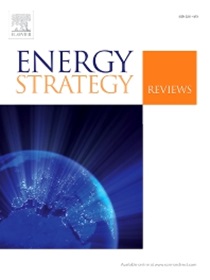区域供热系统能源安全指标分析。拉脱维亚的案例研究
IF 7.9
2区 工程技术
Q1 ENERGY & FUELS
引用次数: 0
摘要
现有的能源安全指数(ESI)研究侧重于单个国家,根据国家或地区的具体情况选择指标。本研究通过综合指数方法评估了拉脱维亚区域供热(DH)的ESI。该指数由10个指标组成,通过全面的文献综述确定,随后根据卫生保健的具体情况进行调整。调查结果揭示了不同维度的明显趋势。在社会方面,到2050年,人均家庭能源使用量预计将增加到8.5兆瓦时,而每平方米的消费量将下降到0.15兆瓦时/平方米。经济方面稳步改善,进口依存度下降到2.7%,自力更生上升到62.1%,家庭取暖费用从2010年占收入的38%下降到2050年的3.9%。环境维度表现出最强劲的进步:二氧化碳排放量从2010年的每平方米14.76吨下降到2050年的净零,其分类指数从0.16提高到1.0。技术层面的效率有所提高(到2050年达到1.4兆瓦时/兆瓦时),但能源多样性面临下降,到2030年达到峰值(0.78),到2050年降至0.43。总体而言,DH ESI在2020年最低(0.44),2030年最高(0.64)。在可再生能源扩张、效率提高和进口依赖减少所带来的经济和环境收益的推动下,拉脱维亚的能源安全(ES)预计将在长期内得到加强。社会和技术方面的脆弱性依然存在,因此需要采取有针对性的政策措施来平衡所有领域的进展。本文章由计算机程序翻译,如有差异,请以英文原文为准。

Analysis of district heating system energy security index. A case study from Latvia
Existing energy security index (ESI) studies focus on individual countries, with indicators chosen according to the specifics of the country or the region. This study assesses the ESI for district heating (DH) in Latvia through a composite index methodology. The index consists of 10 indicators, identified through a comprehensive literature review and subsequently adapted to the specific context of DH.
Findings reveal distinct trends across dimensions. In the social dimension, household energy use per capita is predicted to increase to 8.5 MWh by 2050, while consumption per square metre will fall to 0.15 MWh/m2. The economic dimension shows steady improvement, with import dependency decreasing to 2.7 %, self-reliance rising to 62.1 %, and household heating costs falling from 38 % of income in 2010 to 3.9 % in 2050. The environmental dimension demonstrates the strongest progress: CO2 emissions per m2 decline from 14.76 t in 2010 to net zero by 2050, raising its sub-index from 0.16 to 1.0. The technical dimension improves in efficiency (1.4 MWh/MW by 2050) but faces declining energy source diversity, peaking in 2030 (0.78) and dropping to 0.43 by 2050. Overall, the DH ESI is lowest in 2020 (0.44) and highest in 2030 (0.64).
Latvia's DH energy security (ES) is projected to strengthen in the long term, driven by economic and environmental gains from renewable energy expansion, efficiency improvements, and reduced import dependency. Vulnerabilities persist in the social and technical dimensions, underscoring the need for targeted policy measures to balance progress across all areas.
求助全文
通过发布文献求助,成功后即可免费获取论文全文。
去求助
来源期刊

Energy Strategy Reviews
Energy-Energy (miscellaneous)
CiteScore
12.80
自引率
4.90%
发文量
167
审稿时长
40 weeks
期刊介绍:
Energy Strategy Reviews is a gold open access journal that provides authoritative content on strategic decision-making and vision-sharing related to society''s energy needs.
Energy Strategy Reviews publishes:
• Analyses
• Methodologies
• Case Studies
• Reviews
And by invitation:
• Report Reviews
• Viewpoints
 求助内容:
求助内容: 应助结果提醒方式:
应助结果提醒方式:


